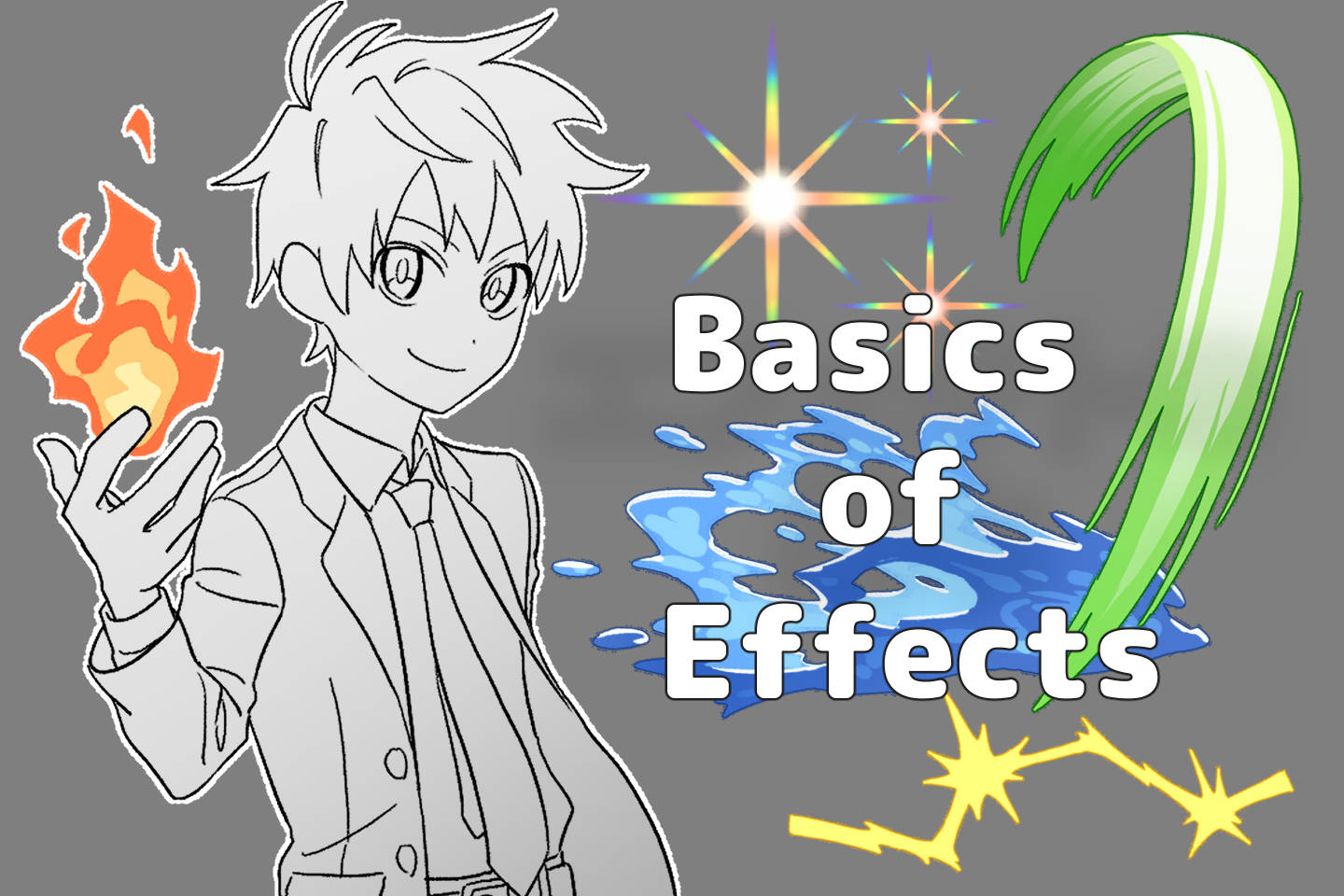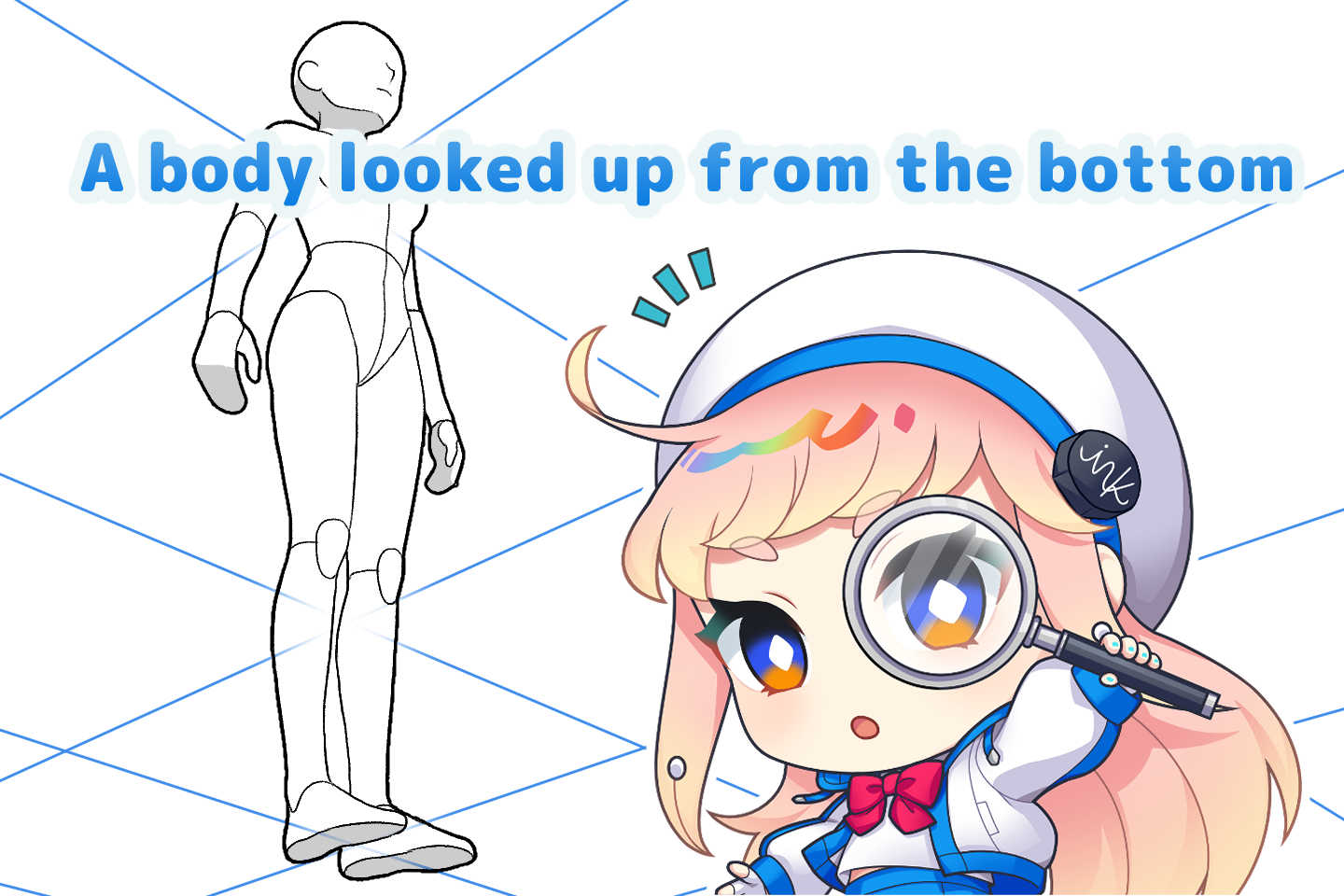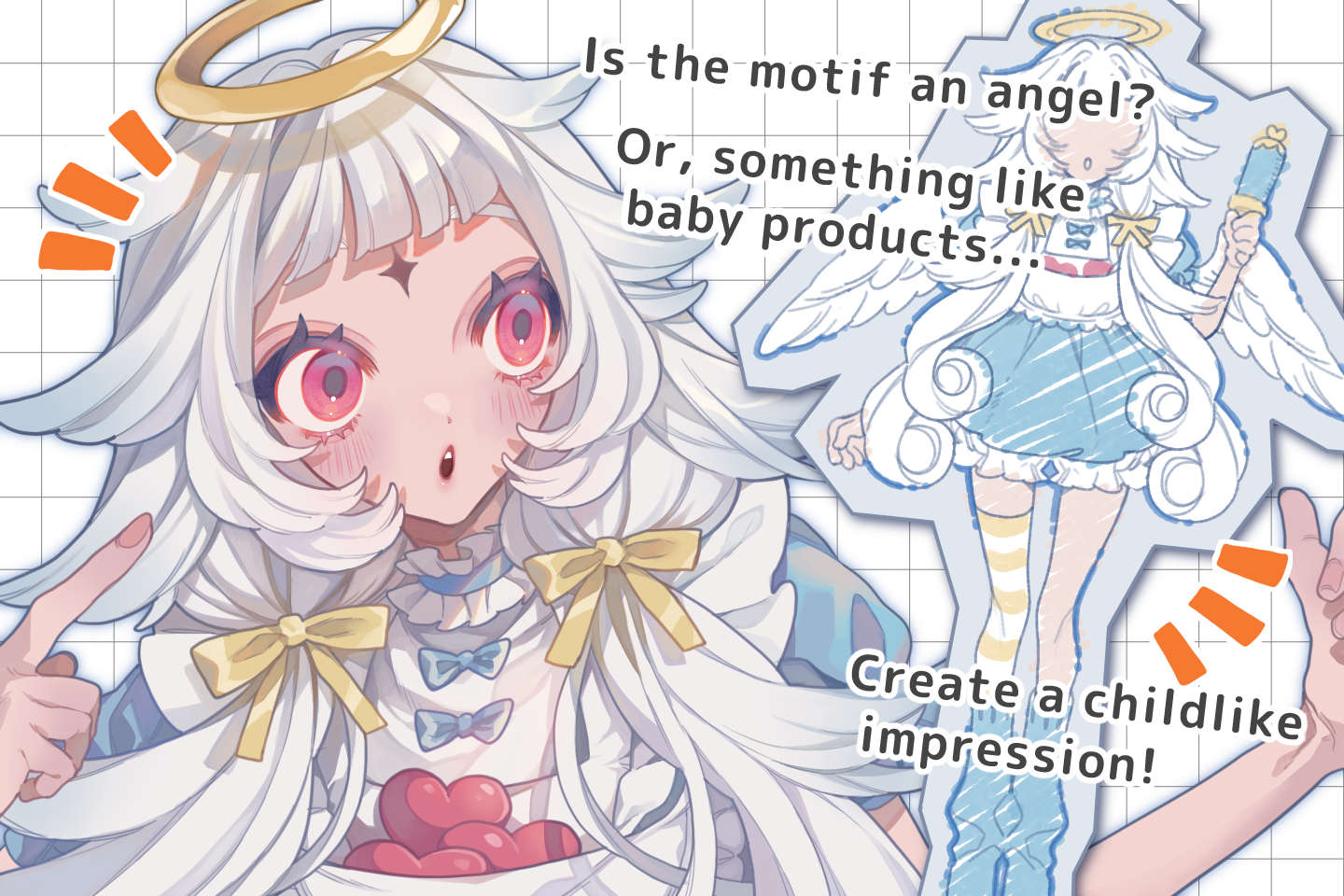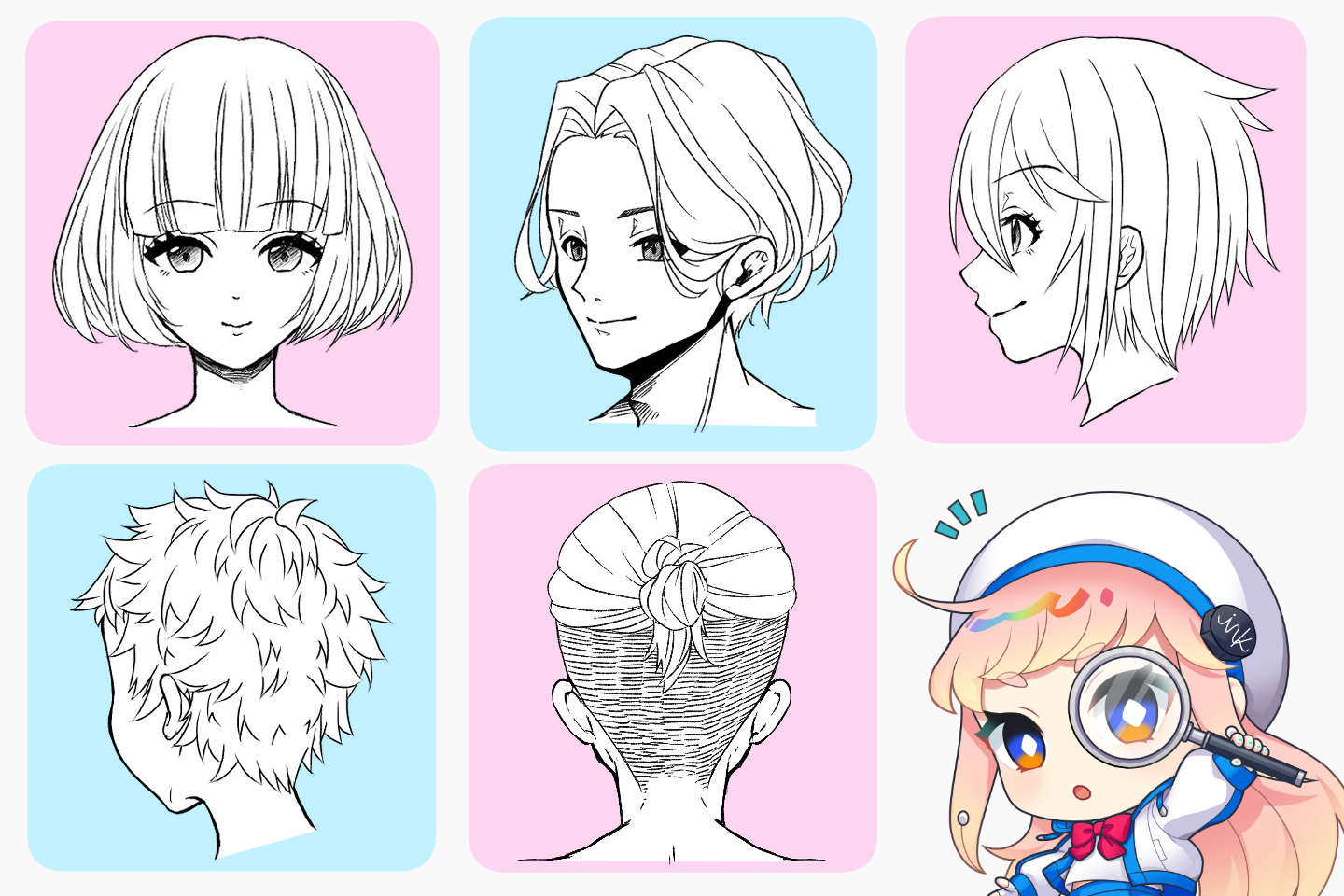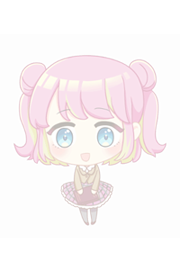
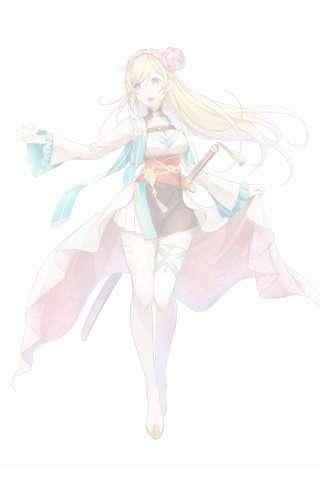
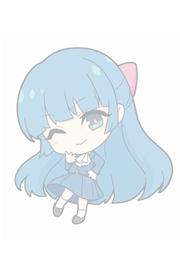
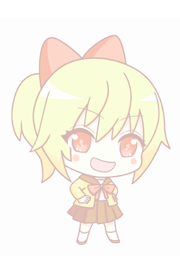
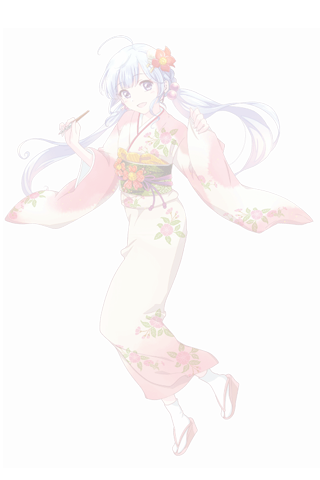







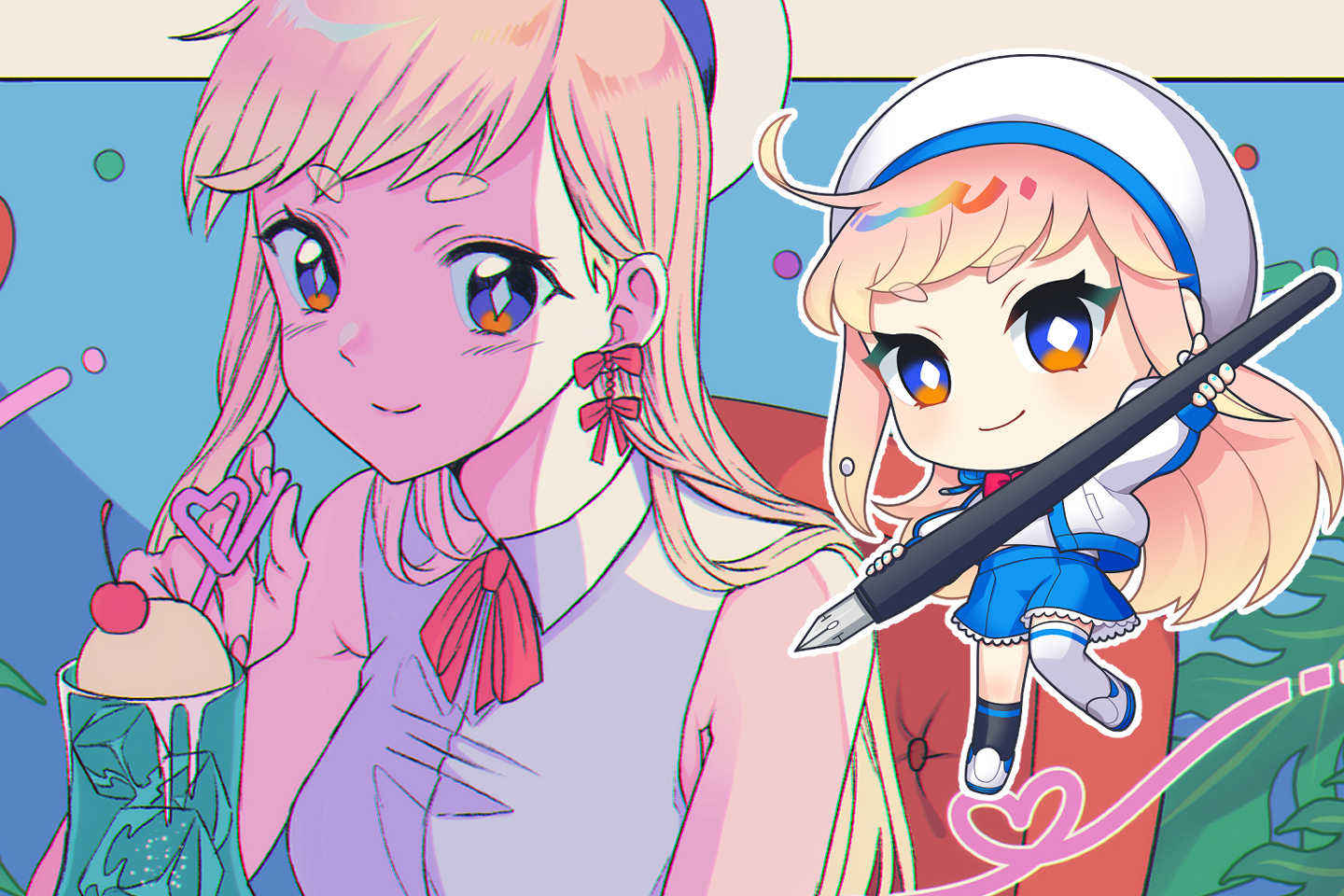
With the current retro boom among the younger generation with items such as loose socks, cream soda and old-fashioned coffee shops, there are probably many people who want to draw retro illustrations but don’t know how to do it.
In order to draw retro illustrations, it is important to know the difference between Showa and Heisei retro and their respective characteristics.
Let’s learn together the tricks to drawing retro and pop illustrations by grasping characteristics!
Let’s learn the difference between Showa and Heisei retro!
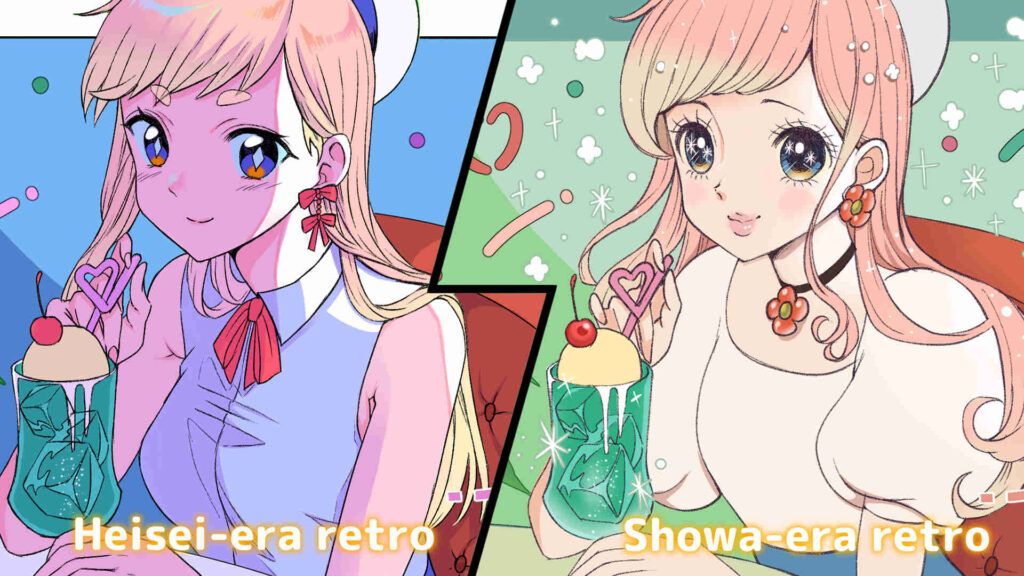
What is retro anyway?
The word, retro has a meaning of nostalgic.
There is no specific definition, and anything with a nostalgic feel can be called retro.
As it is mainly used to refer to things from the Taisho and Showa eras in Japan, anything too old, such as things from the Edo period, would fall outside the retro image, so it is used for things that are old but still have a nostalgic feel.
In Japan, things that have a slightly nostalgic Showa period feel are often referred to as Showa-retro, and recently the term Heisei-retro has also started to be used because more than 20 years have passed away.
We will now explain the characteristics of Showa-retro and Heisei-retro, dividing them into two main types.
Characteristics of Showa retro
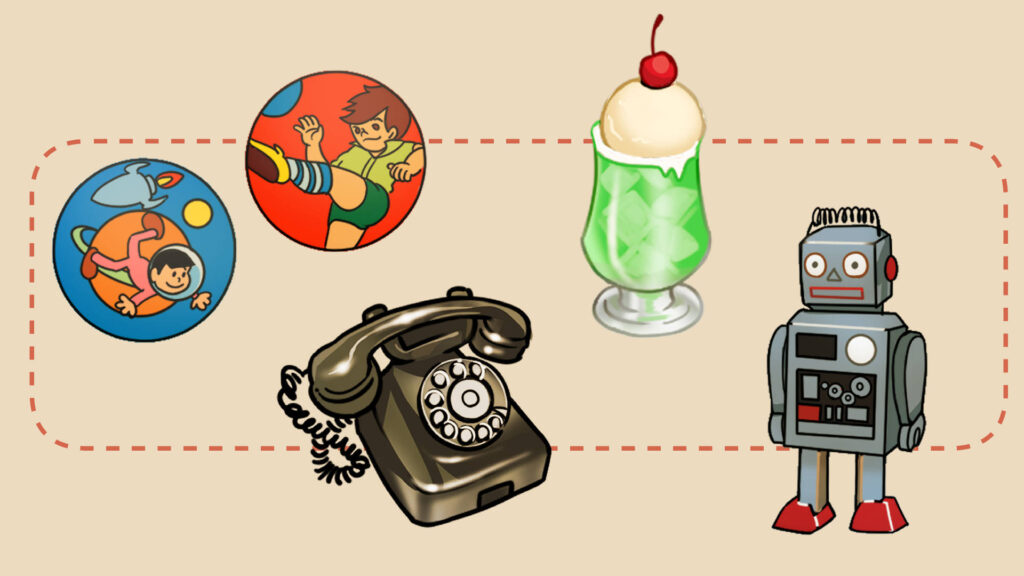
The Showa era is the period from December 25th, 1926 (the first year of the Showa era) to January 7th, 1989 (the 64th year of the Showa era).
Showa retro refers to a nostalgic view of the Showa period as a whole, including the war and post-war periods, but it is most often used to refer to nostalgia for Japan during the 1950s and 1960s, the period of rapid economic growth.
More specifically, this evokes images of the culture and motifs that were popular in Japan during the period of reconstruction after the devastation of the Pacific War, such as black telephones, cathode ray tube televisions, coffee shops, soda float and other popular foods of the time, as well as the playing cards and tin toys that children used to play with in the days before computers, and the cheap sweets (dagashi) that were popular at the time.
A color palette that evokes the Showa era
Calm color scheme
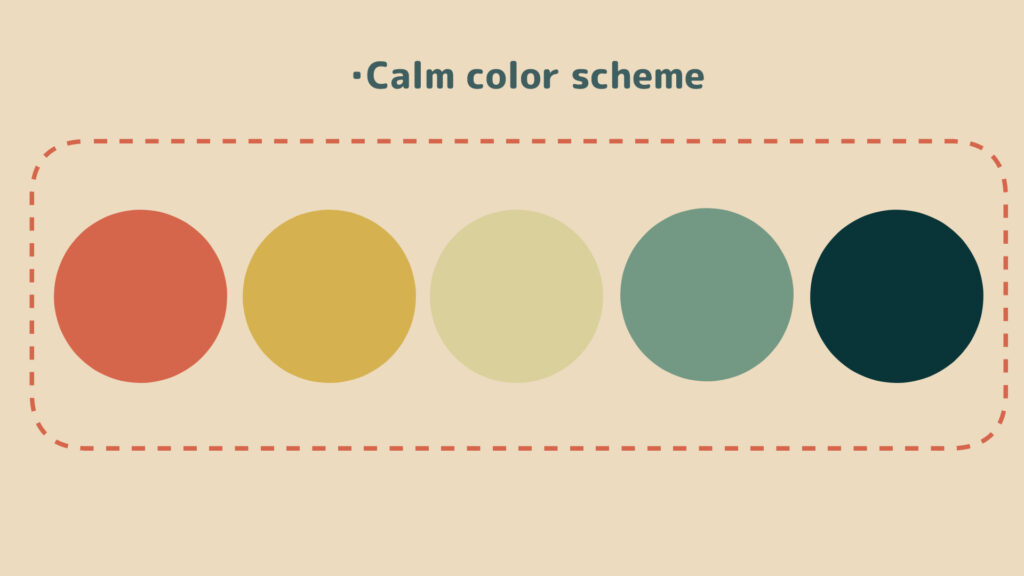
This color scheme gives off a somewhat nostalgic atmosphere. Even when using green or black, mixing in brown gives a calm impression.
A color scheme that evokes a sense of humanity and warmth
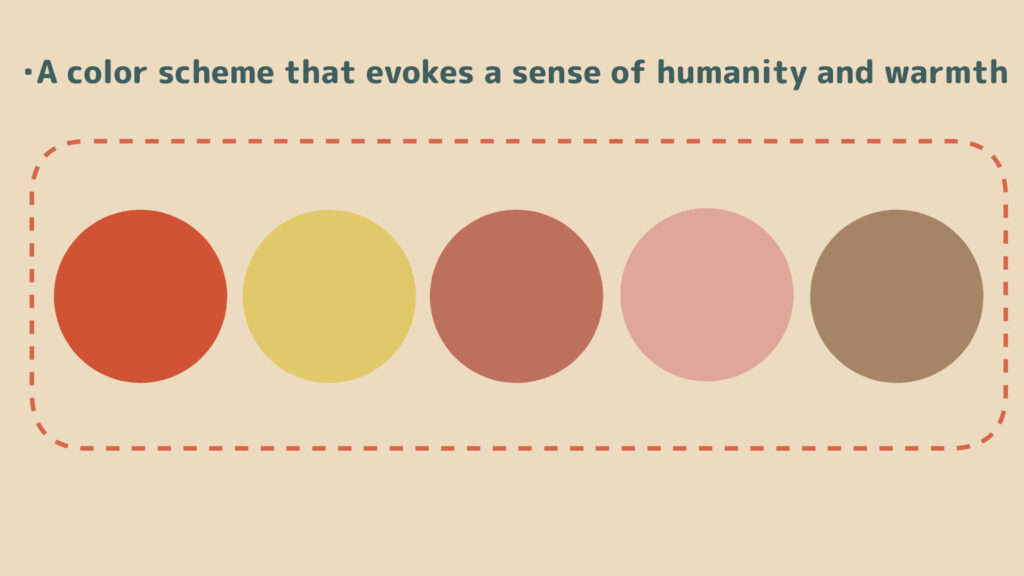
This is a color scheme that uses only warm colors.
By making the vermillion color particularly vivid, you can create a bright impression in a retro atmosphere.
Faded color scheme
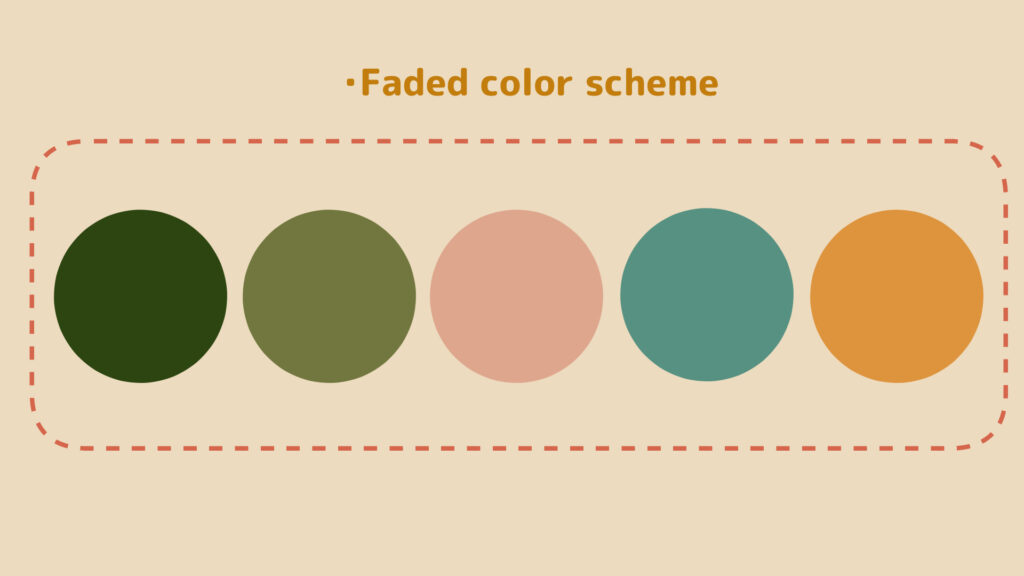
This is a classic faded color scheme for retro illustrations.
It’s not just faded, but by combining turquoise green and the opposite color, vivid yellow in the hue circle with a calm color, it becomes a color scheme that catches the eye.
The characteristics of Heisei retro
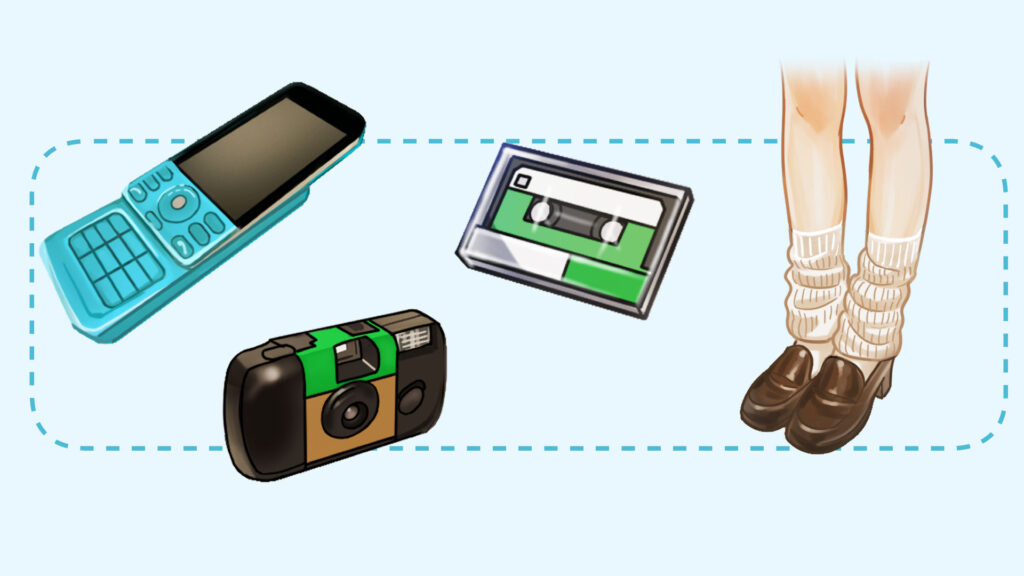
The period from January 8, 1989 (the first year of Heisei) to April 30, 2019 (the 31st year of Heisei) is known as the Heisei era.
It was a time when the analog feel of the Showa era was completely transformed, and digitalization was progressing, and it was characterized by a bright, forward-looking atmosphere and a sense of the near future that evoked digitalization.
Compared to the Showa retro style, it had a fresh, sophisticated feel, and a sense of freedom and flamboyance, as seen in digital cameras, J-pop, and the sparkling styles found in Y2K fashion.
Y2K refers to the fashion and culture that became a trend around the year 2000, with the Y standing for Year and the K standing for the unit 1,000 to represent the 2000s.
Some of the motifs that are specifically associated with this are loose socks, cell phones being ironically called Galapagos cell phone, and cassette tapes, etc.
A color palette that gives you a sense of Heisei-era pop culture
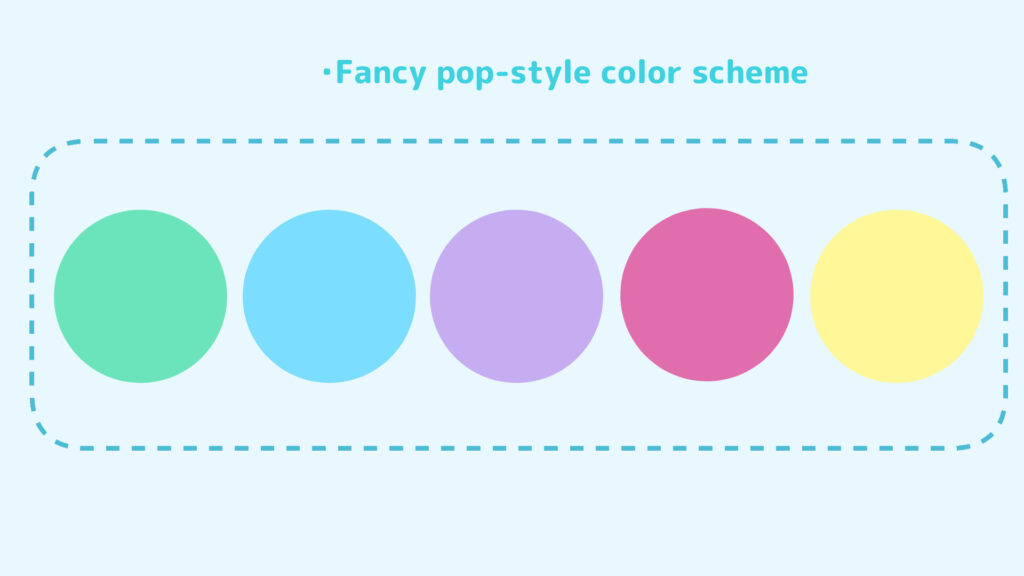
The colors are gentle pastel colors being unified in bluish color.
The greens and pinks are also tinged with blue, and the colors are inspired by the fancy accessories that were popular in the Heisei era.
Y2K-style color scheme
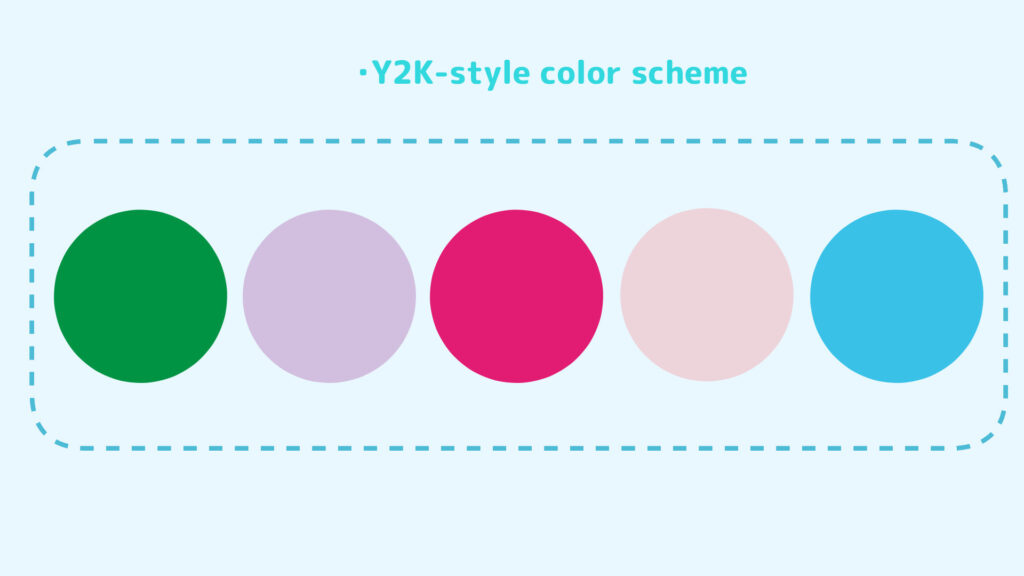
This color scheme is reminiscent of the Heisei era, when loud, vivid colors and sparkly decorative parts were popular.
Color schemes in the 90’s pop style
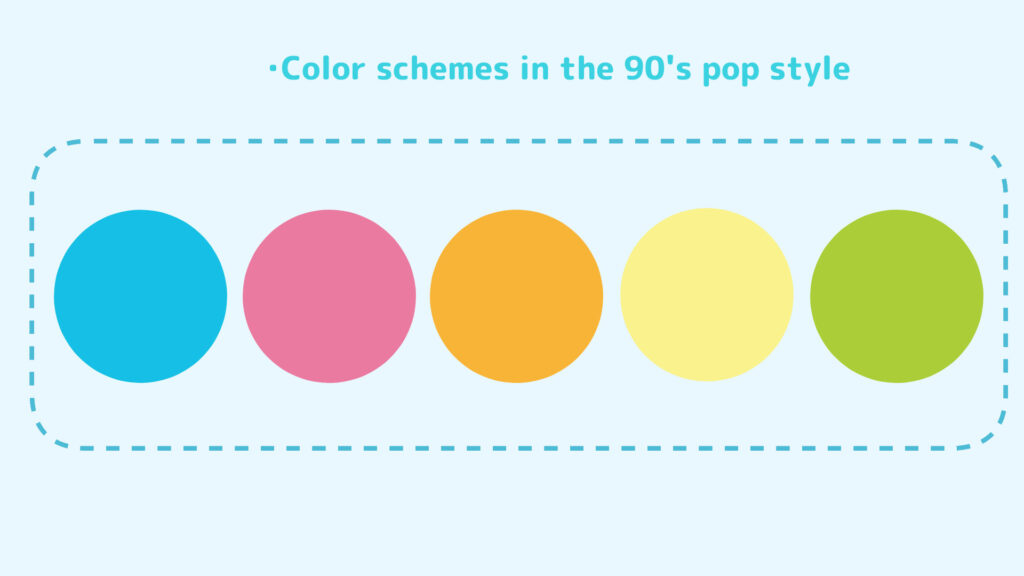
Another characteristic of the 2000s was the popularity of pop-style character goods.
Other retro terms and motifs
You can also get a sense of the appeal of retro from the music, anime and clothing that were popular in each decade.
Music trends.. Influenced by Western music, the sophisticated music genre so called city pop was popular in the 1970s and 1980s.
Anime trends… In the 1990s, anime such as Heisei anime was produced, which was heavily influenced by the trends of the time.
Fashion trends… In the 1950s, elegant and feminine silhouettes such as A-line dresses and skirts with a nipped-in waist were popular.
In the 1960s, brightly colored, pop designs, miniskirts, floral patterns and geometric patterns were also popular.
A step-by-step guide to drawing retro illustrations
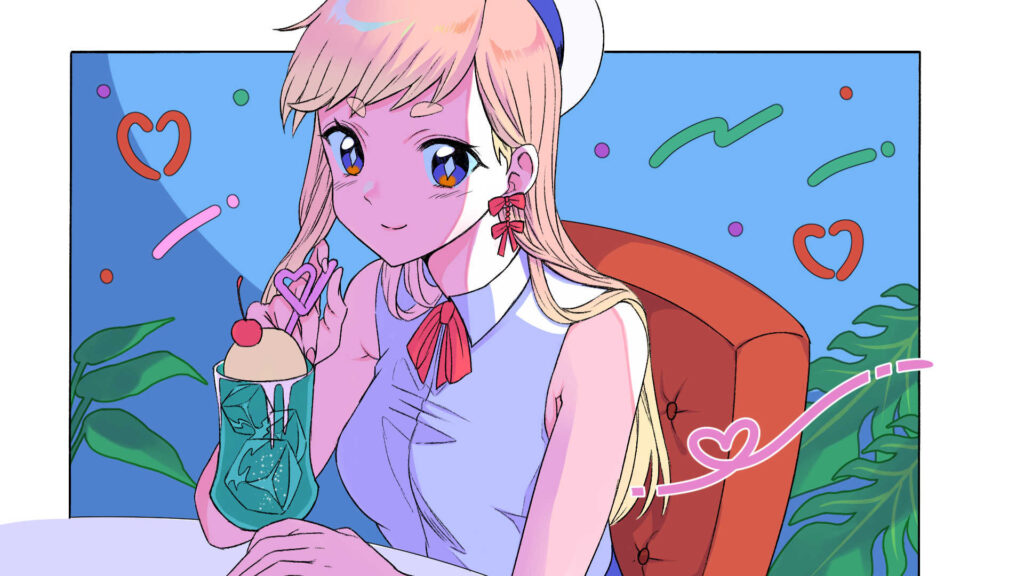
We will show you how to draw retro illustrations by the step-by-step approach.
The important elements of retro illustrations are the motif and color palette.
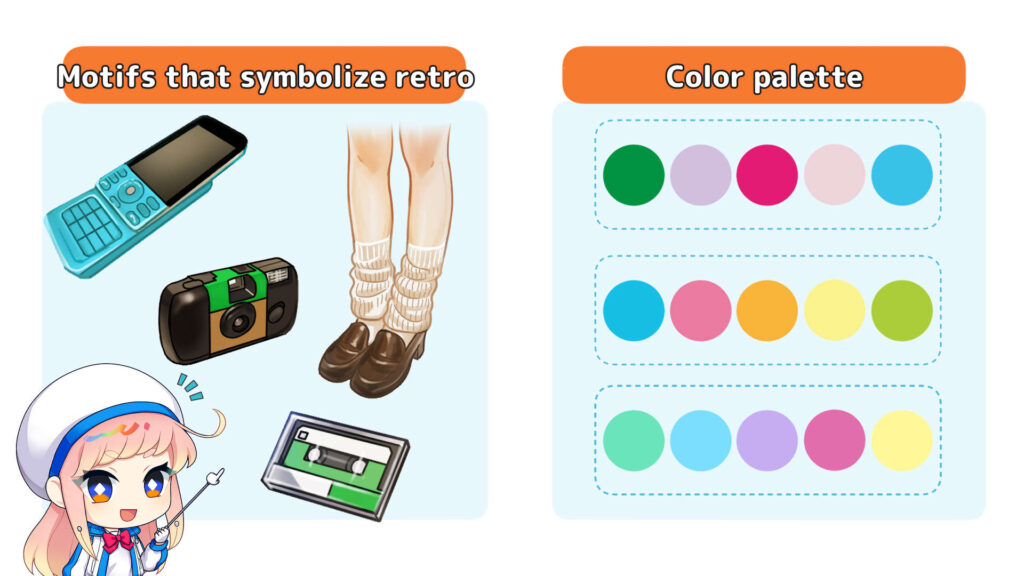
First, prepare a motif and color palette that symbolize retro, and then try drawing a retro illustration.
When looking for motifs, it’s a good idea to look on the internet or in books.
It’s easier to search if you decide which image you want to draw, Heisei retro or Showa retro.
Step 1 Let’s choose a retro motif
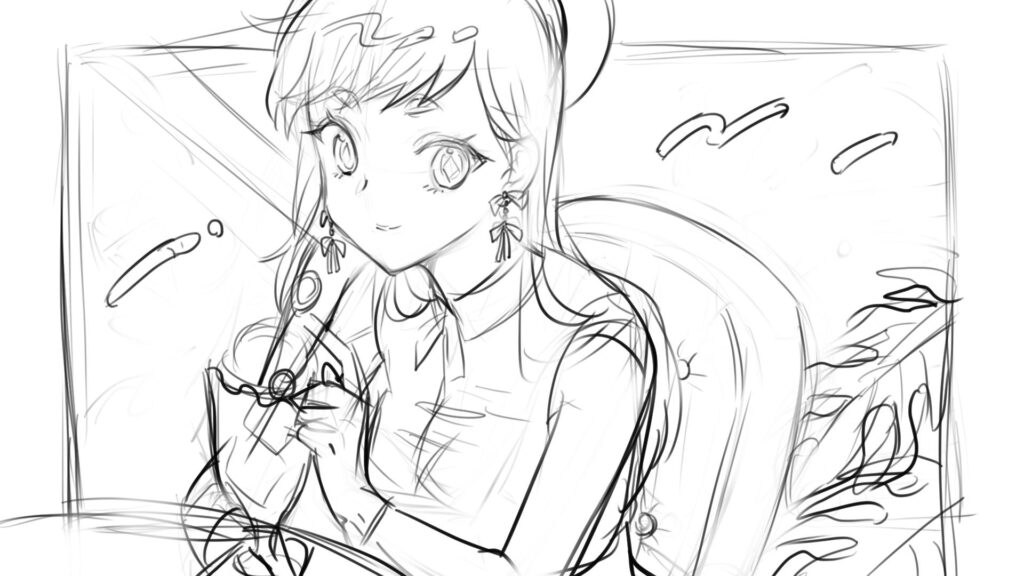
Let’s choose a motif that will make the viewer feel nostalgic.
We have chosen a cream soda and a coffee shop as motifs, based on things from the 1950s and 1960s.
We have also chosen a retro A-line dress for the outfit.
This time, We will be painting using a color palette similar to that used in 1990s anime.
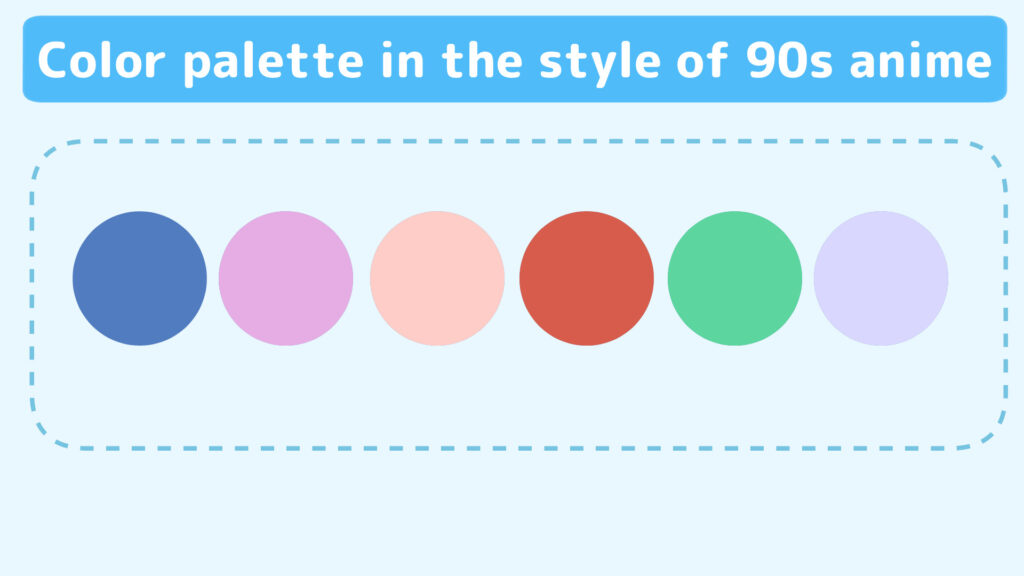
The overall color scheme is low in saturation and has a bluish tinge, but we will use a larger number of colors to make it look colorful.
When painting large areas, use the colors in the palette, but when painting the shadows on skin and clothing, darken or lighten them as necessary.
Step 2 Let’s draw a color rough sketch
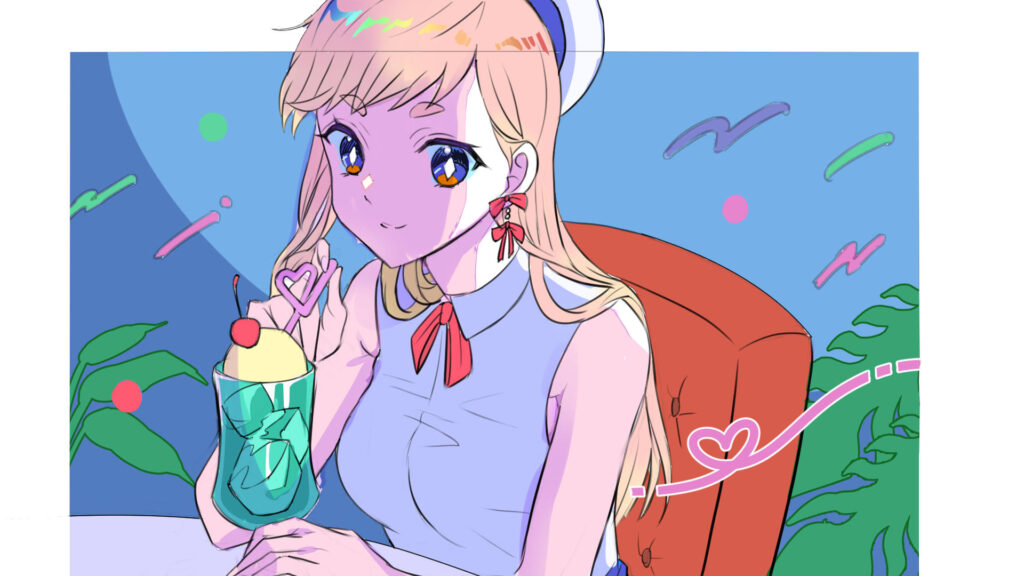
We tried to create a city pop image, with foliage plants in the background and hearts, spirals and circles scattered around.
Step 3 Let’s draw line art
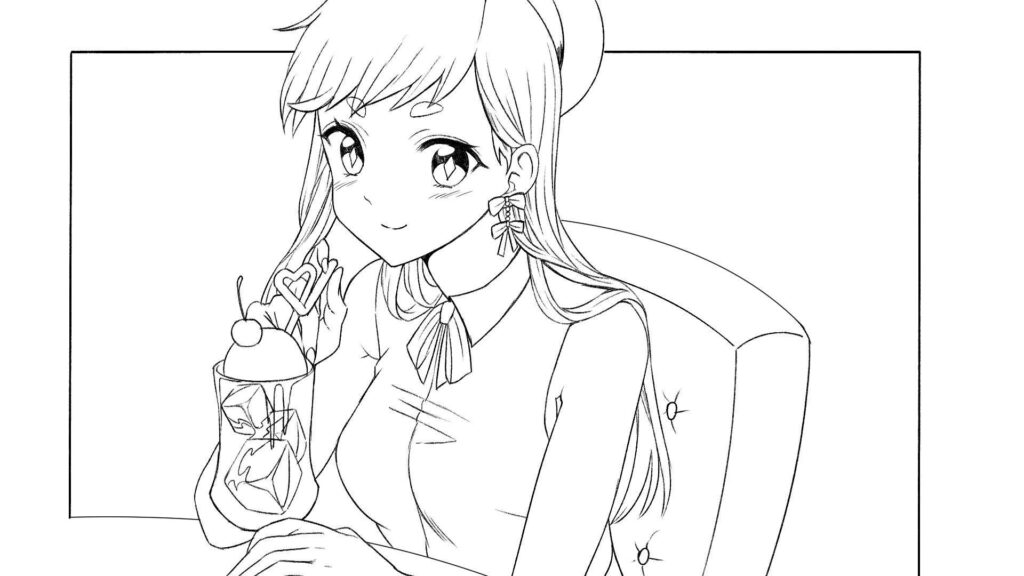
To give it a retro feel, use a pencil for the pen and draw the lines without changing the thickness too much.
The key is to draw the eyes with a large highlight, in the style of old-fashioned anime.
Step 4 Add colors to finish
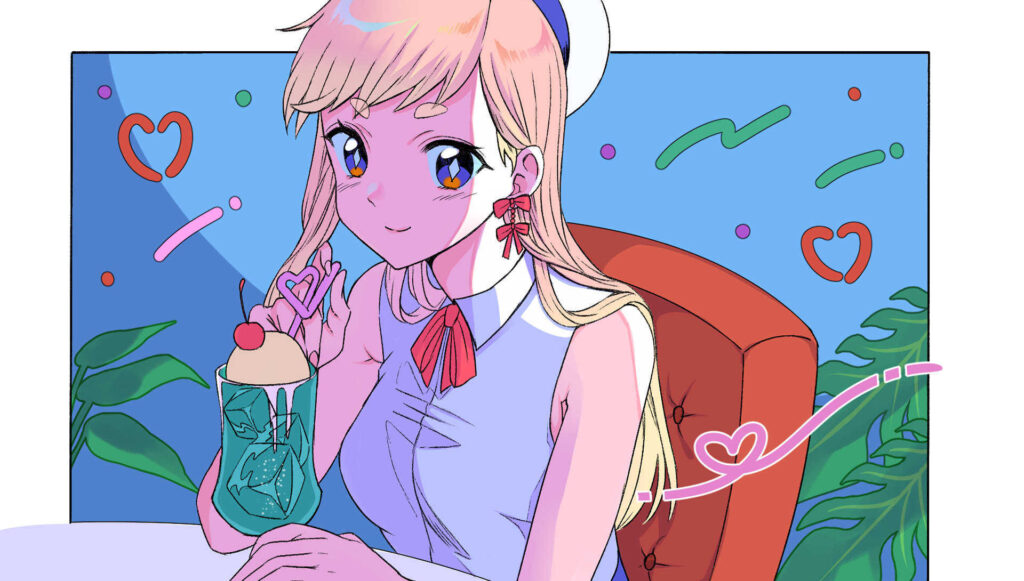
We will add colors using the color palette prepared in step 1 as a reference.
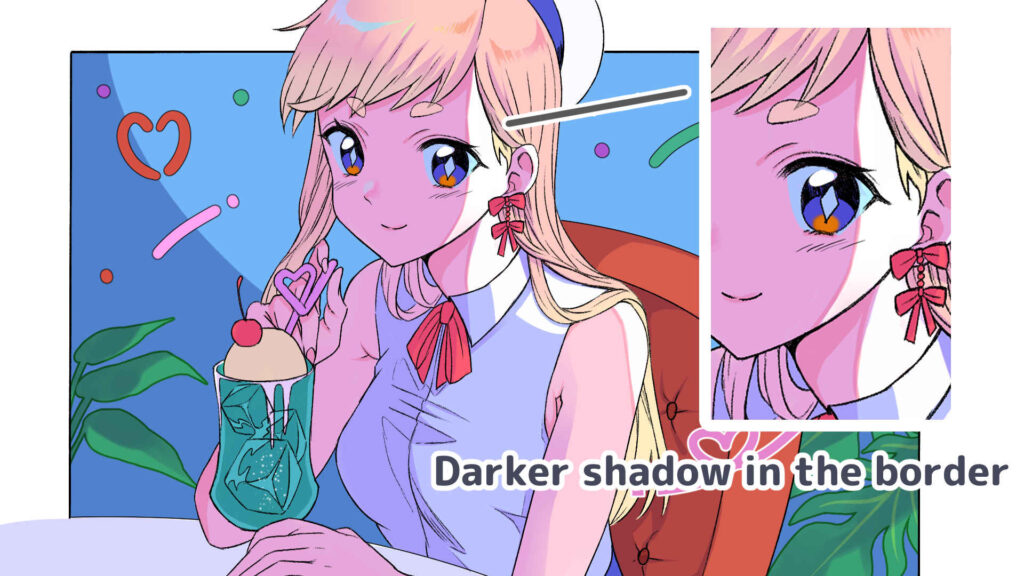
By placing darker shadows deliberately between the highlights and shadows of the skin, you can create a more old-fashioned anime-style feel.
Step 5 Challenge the processing, too!
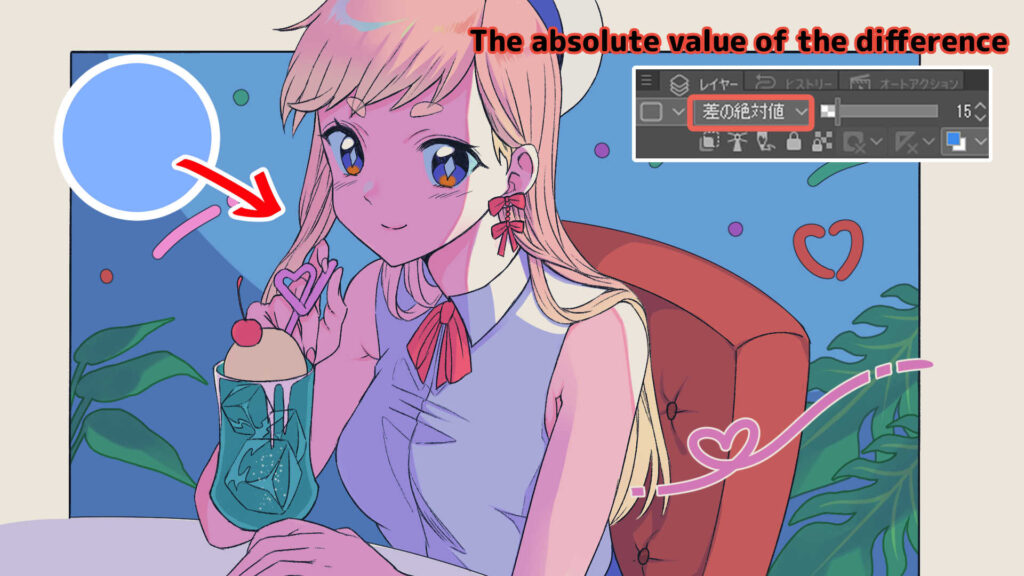
To create a more retro feel, it is effective to apply smoky processing like old-fashioned paintings.
Apply a blue-based color to the entire image using the absolute value of the difference in the composite mode.
Set the opacity to around 20%.
Just doing this will lower the saturation and create a retro feel.
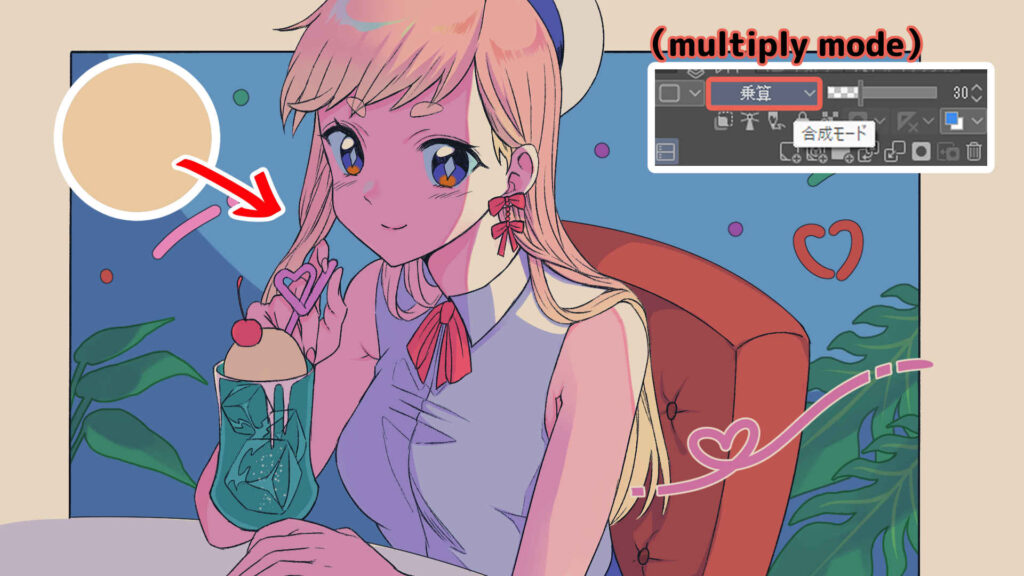
Apply a beige color to the entire image using the Multiply mode.
Set the opacity to about 35%.
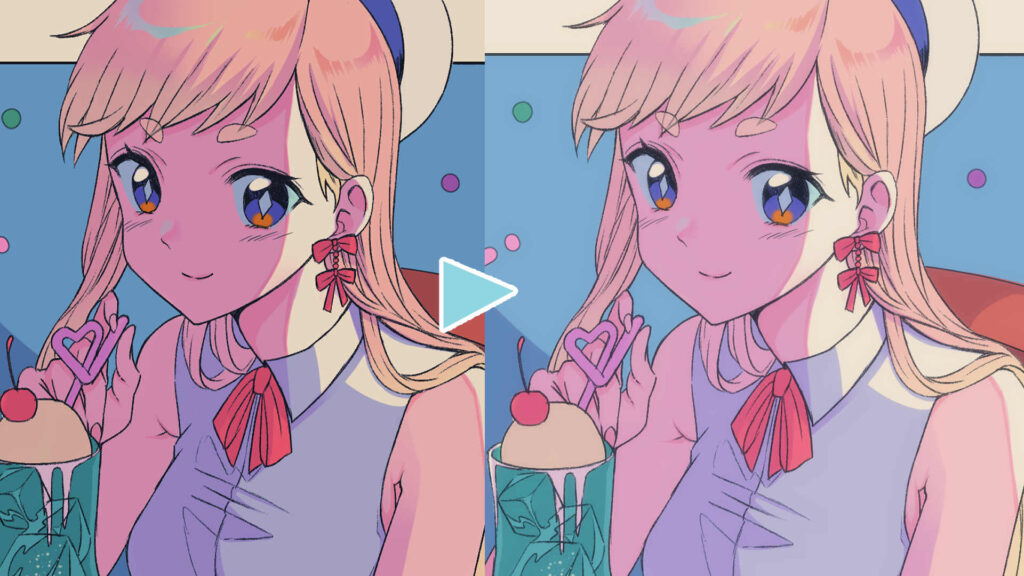
Apply a glow effect.
From the layer menu, select Merge the Copy of Visible Layers to duplicate the merged layer.
Apply Gaussian blur to the duplicated layer from the filter menu, change the composite mode to screen mode, and then overlay it at 30% opacity.
This will create a 90s anime atmosphere drawn with a cel.
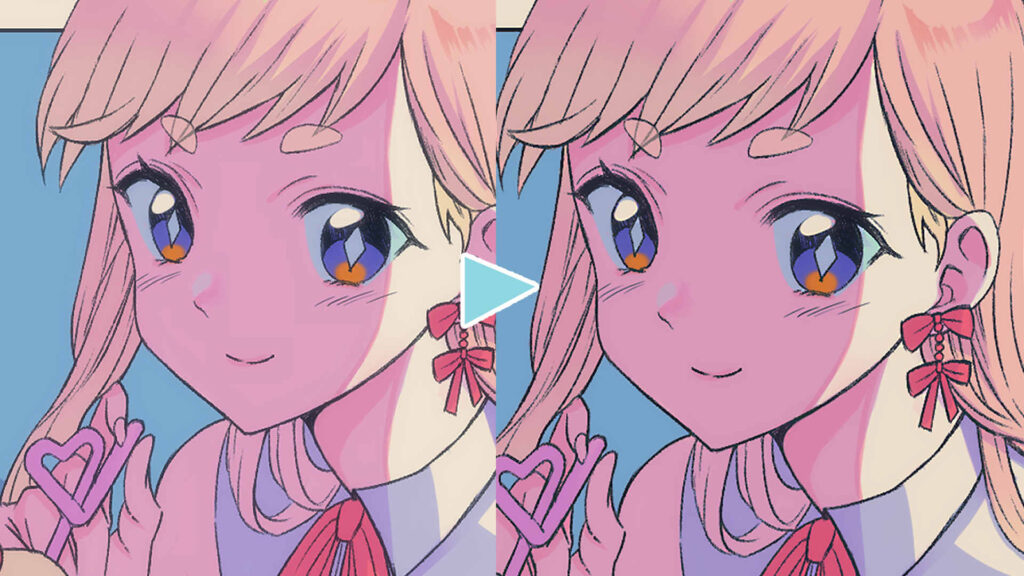
Apply an unsharp mask from the filter menu to sharpen the blurred edges.
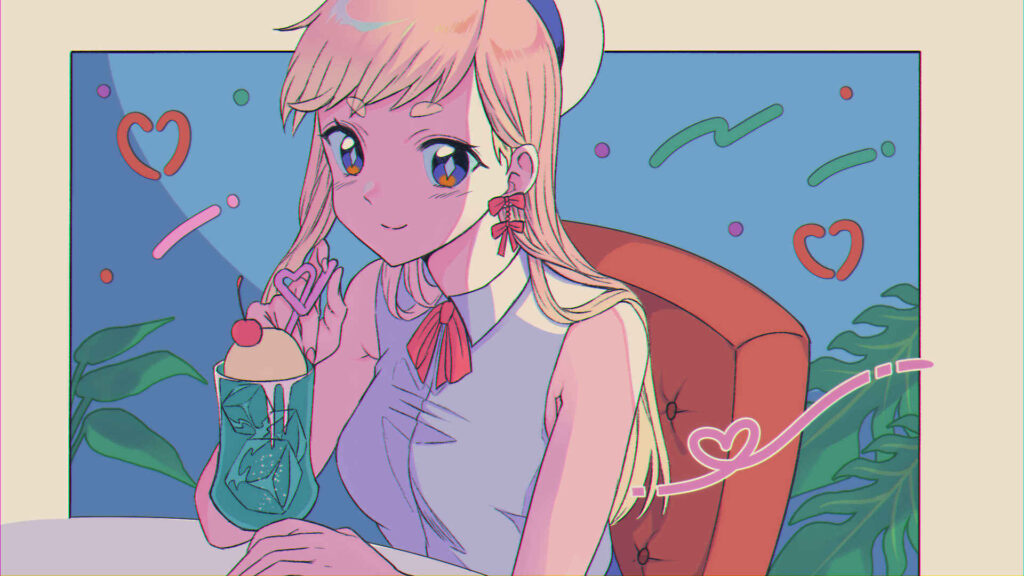
To create the impression that the cel of the animation has slipped out of place, we add chromatic aberration to complete the effect.
Let’s try drawing in the Showa retro style!
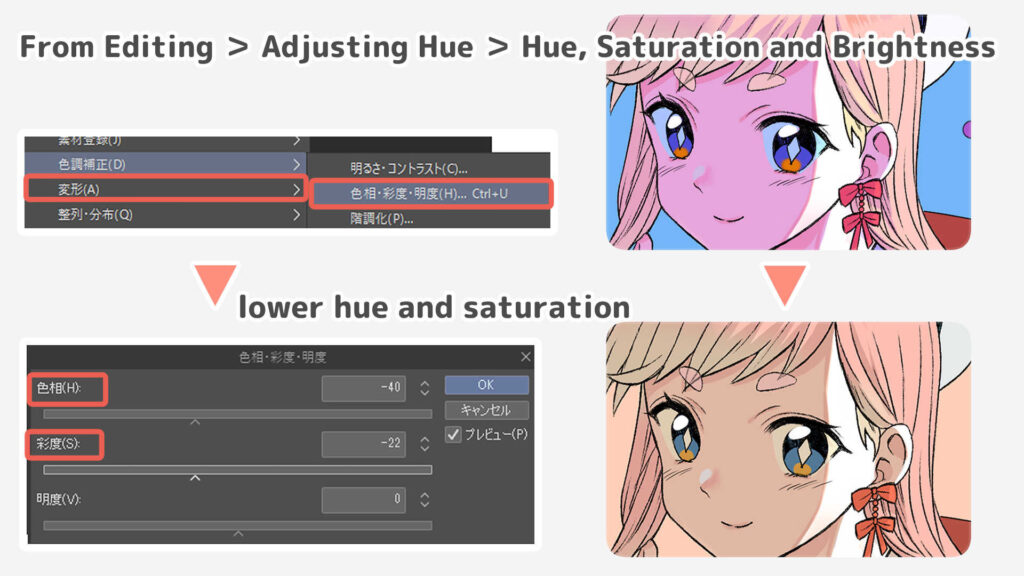
Let’s create a Showa retro style color pallet using an illustration drawn in the style of Heisei retro.
Select the layer you want to change the hue of, and then choose Adjusting Hue from the Edit menu to use the Hue, Saturation, Brightness adjustment function.
Edit each layer, such as layers for the skin, hair, clothes, background and accessories; and reduce the saturation of the overall image to make it more yellowish.
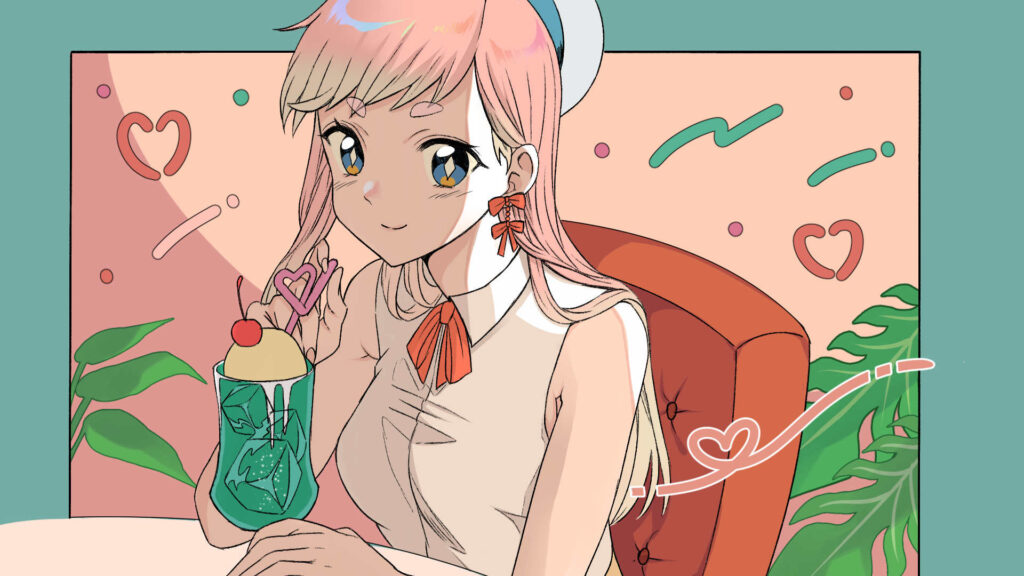
Even just changing the hue can create a totally different retro impression.
Let’s change the design and effects to match the retro atmosphere
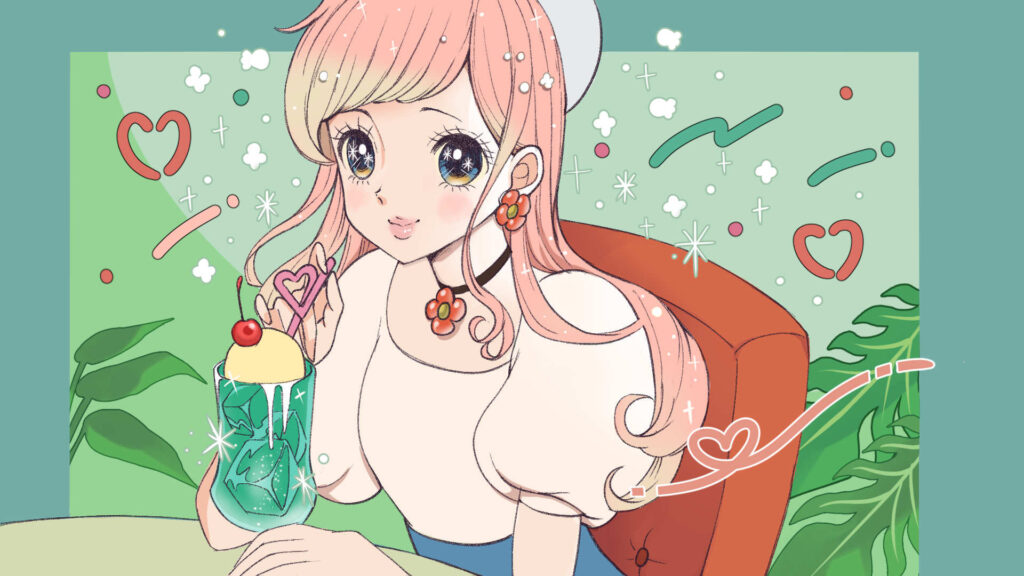
You can create more Showa retro like atmosphere using patterns and effects found in the girl’s manga in Showa period in line with the retro atmosphere you want to express.
If you know the characteristics, you can draw retro illustrations!
Even if you didn’t know how to draw retro-style illustrations, you will be able to draw attractive illustrations by learning about the definition of retro, its coloring and motifs.
Once you’ve got the hang of it, you’ll be able to show your originality in choosing motifs and colors, and you’ll want to keep drawing new illustrations.
If you still have trouble or need any advice, please consider enrolling in a school.
At the Illustration and Manga School, egaco, our instructors will support you in creating your illustration from a professional perspective!
Please use this article as a reference and challenge the retro illustration!
